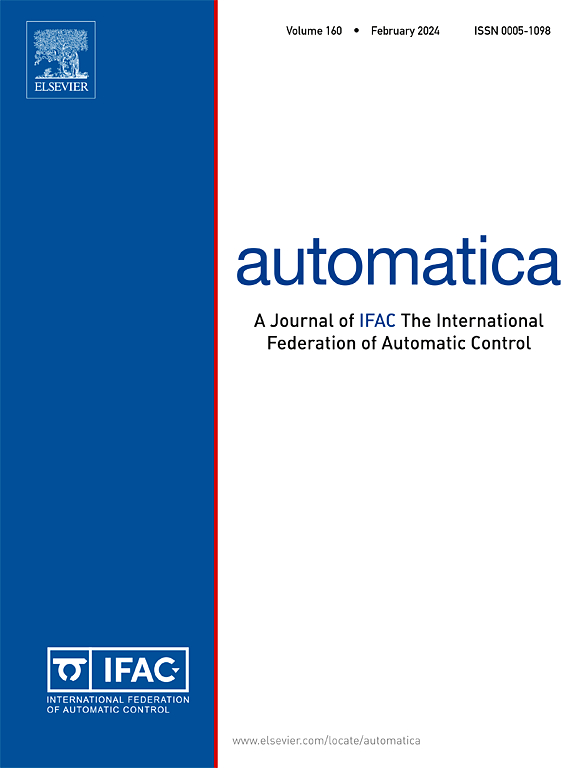Partially cooperative robust distributed model predictive control for tracking
IF 5.9
2区 计算机科学
Q1 AUTOMATION & CONTROL SYSTEMS
引用次数: 0
Abstract
This work investigates a partially-cooperative coalitional control setting for input-coupled multi-agent linear systems to robustly track changing setpoints. Within this framework, agents have the flexibility to share a public portion of their input, ceding control authority to neighbors, while keeping the rest private. Instead of coordinating the predicted control inputs, the bounds that define the public and private input constraint sets are negotiated in a distributed manner when the need arises, significantly reducing communicated data within the cooperation network. Coupling disturbances are considered through a tube-based approach, which steers the system to the desired target points while guaranteeing recursive feasibility and stability through tracking techniques. Finally, the approach is validated through simulations on an eight-input coupled tank benchmark.
跟踪的部分协作鲁棒分布式模型预测控制
本文研究了输入耦合多智能体线性系统的部分合作联合控制设置,以鲁棒跟踪变化的设定值。在这个框架中,代理可以灵活地共享其输入的公共部分,将控制权交给邻居,同时保持其余部分的私有。不是协调预测的控制输入,而是在需要时以分布式方式协商定义公共和私有输入约束集的边界,从而大大减少了合作网络中的通信数据。耦合干扰是通过一种基于管的方法来考虑的,该方法将系统引导到期望的目标点,同时通过跟踪技术保证递归的可行性和稳定性。最后,通过八输入耦合油箱基准的仿真验证了该方法的有效性。
本文章由计算机程序翻译,如有差异,请以英文原文为准。
求助全文
约1分钟内获得全文
求助全文
来源期刊

Automatica
工程技术-工程:电子与电气
CiteScore
10.70
自引率
7.80%
发文量
617
审稿时长
5 months
期刊介绍:
Automatica is a leading archival publication in the field of systems and control. The field encompasses today a broad set of areas and topics, and is thriving not only within itself but also in terms of its impact on other fields, such as communications, computers, biology, energy and economics. Since its inception in 1963, Automatica has kept abreast with the evolution of the field over the years, and has emerged as a leading publication driving the trends in the field.
After being founded in 1963, Automatica became a journal of the International Federation of Automatic Control (IFAC) in 1969. It features a characteristic blend of theoretical and applied papers of archival, lasting value, reporting cutting edge research results by authors across the globe. It features articles in distinct categories, including regular, brief and survey papers, technical communiqués, correspondence items, as well as reviews on published books of interest to the readership. It occasionally publishes special issues on emerging new topics or established mature topics of interest to a broad audience.
Automatica solicits original high-quality contributions in all the categories listed above, and in all areas of systems and control interpreted in a broad sense and evolving constantly. They may be submitted directly to a subject editor or to the Editor-in-Chief if not sure about the subject area. Editorial procedures in place assure careful, fair, and prompt handling of all submitted articles. Accepted papers appear in the journal in the shortest time feasible given production time constraints.
 求助内容:
求助内容: 应助结果提醒方式:
应助结果提醒方式:


